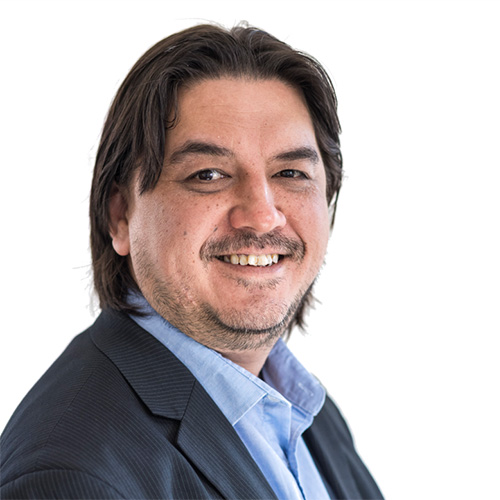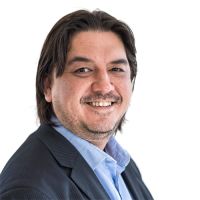Centre lead
Andrew Kao
Professor of Materials Science and Engineering
About us: our vision
Whether responding to a pandemic, combating climate change, planning a city or designing a video game, it is now almost unheard of – and certainly unwise – not to use some form of mathematical or computational modelling. The Centre for Advanced Simulation and Modelling (CASM) is an outward thinking, dynamic, cross-disciplinary research hub focused on delivering positive impacts across multiple application spaces through the use of mathematical modelling, computational and numerical analysis, bespoke scientific software and artificial intelligence.
We aim to:
- Maintain and grow our reputation as a hub for world leading expertise in simulation and modelling techniques and methodologies, encompassing both statistical and deterministic approaches.
- Forge strong and productive research partnerships with academics at and beyond the University of Greenwich, along with business, the public and third sectors, in order to address a wide variety of global challenges.
- Support economic growth and regeneration, including through the development and commercialisation of our own new IP.
- Provide continued professional development, investing in our researchers and empowering them to achieve their full potential.
- Use our expertise and those of our collaborators to undertake impactful research concentrating on advancing technologies that will benefit humanity.
Our impact on the world
Some of our research addresses theoretical questions, pushing the boundaries of advanced computational modelling itself. Yet our primary focus is solving real-world challenges through the use of mathematical models, bespoke scientific software, high-performance computing, data analytics and AI techniques, in close cross-disciplinary collaboration with internal and external partners.
Through the application of simulation and modelling, CASM is already contributing to many of the UN Sustainable Development Goals (SDGs). Examples include:
- Our work on enhanced electrification, power electronics and battery technology, which supports greater access to Affordable, Reliable, Sustainable and Modern Energy (SDG7).
- Our studies of the inequalities faced by LGBTQ+ people in housing, supporting Reduced Inequality (SDG10).
- Our research into the dispersal of pollutants caused by different weather conditions, which supports Sustainable Cities and Communities (SDG11).
- Our facilitation of Sustainable Consumption and Production Patterns (SDG12) through circular manufacturing projects which improve material properties and reduce material wastage ranging from turbine blades to 3D-printed components.
- Our collaborations with industry on Net Zero aviation technology and green hydrogen production, supporting Urgent Action to Combat Climate Change (SDG13).
Who we are
An interdisciplinary approach
Interdisciplinarity is a hallmark of everything CASM does. As modellers and software developers, we naturally collaborate with experimental teams, and our applications range from manufacturing, energy and materials, through biology, environment and food, to space, microelectronics and neuroscience. Our researchers have even applied artificial intelligence, mathematical and computational modelling to historical ship reconstruction, criminology, and beer brewing! While each academic may have a specialist area, such as mathematics, computer science, physics or engineering, all share a common ambition: to solve real-world problems using the right tool. Broadly the Centre encompasses, Computer Science and Informatics, Games and Virtualisation, Human and Computer Interaction, Imaging and Visualisation utilised through High Performance Computing.
Partners
Given the broad applicability and versatility of simulation and modelling techniques, it is no surprise that CASM works closely with multiple other researchers across the University of Greenwich and with a vast network of external partners in academia, government and industry. Domestically, our academic collaborators include UCL, Imperial College London, Brunel, Oxford, Birmingham, and Nottingham, while the University of Jena and Helmholtz Zentrum Dresden in Germany and University of Latvia are among our international partners. In industry, we work with Rolls-Royce, Renishaw, Ford, BAE Systems, Constellium, Hydro Aluminium and Sainsbury’s Supermarkets, among many others. CASM researchers also have extensive experience in using prestigious national and international scientific facilities, including Diamond Light Source (the UK’s national synchrotron science facility), the European Synchrotron Radiation Facility and the International Space Station in collaboration with the European Space Agency (ESA). These fruitful partnerships reflect the interdisciplinary nature of the Centre, combining theoretical prediction with experimental observations.
Funding
CASM’s work is supported by the Engineering and Physical Sciences Research Council, British Council, the European Union and our industrial partners. We are actively seeking further funding from Innovate UK and the Medical Research Council
Our research
- Our research covers many different areas and applications, including:
- Additive manufacturing and net zero aviation
- Ultrasonic Processing for Liquid Metals
- Power electronics
- AI and machine learning
- High-powered computing
- Multiphysics
Additive manufacturing and net zero aviation
Additive manufacturing (AM), also termed ‘3D printing’, involves successively adding thin layers of new material formed by melting alloy powders or wires and solidifying them onto prior layers to construct 3D components otherwise impossible to create using traditional techniques. Working with UCL we are looking to improve the quality of components through the use of external fields.
In partnership with Rolls-Royce plc, and the Universities of Birmingham (High Temperature Research Centre) and Oxford, as part of the EPSRC Prosperity Partnership ‘ARCANE’ we are working to make miniaturised jet turbine blades to be used in environmentally friendly, hybrid electric aviation. Our state of the art microstructure models will be used to simulate the solidification of whole turbine blades at a microscale, this will give much needed insight into the solidification process which is impossible to view in situ.
Ultrasonic Processing for Liquid Metals
The ‘Topcoil device’, invented by University of Greenwich researchers, is used for contactless ultrasonic treatment (UST) of metal melts. UST technology improves the final mechanical properties of metals produced for the transport and aerospace industry, by leading to finer microstructure, removal of dissolved gases and dispersion of strengthening particles. Our research is now focussed on how UST could be applied to green hydrogen produced from liquid aluminium, with far reaching implications for net-zero future transport and power generation. Our teams have developed world leading numerical models of ultrasonic cavitation. These models have revealed the physics of these process and have allowed us to optimise designs and tune parameters enabling vastly improved experimental results.
Power electronics
Our research into transforming the reliability, quality, safety, efficiency and cost savings in design and production for the high value electronics industry, is informing industry standards across the globe. This will have applications in renewable energy generation and storage and in electric or hybrid-electric transport. Our numerical models have allowed us to simulate the reliability and operation of power electronics systems. This has enabled us to contribute to world leading software for simulating these systems.
AI and machine learning
Initially deployed for relatively simple tasks, such as image processing, interest in the potential of AI and machine learning has exploded as these modelling techniques have matured, with a particular focus on predictions and process optimisation. Current areas of research include the use of AI in detecting money laundering and fraud, and in ‘natural languages’, where data is turned into prose (a notable example being ChatGPT).
High-powered computing
CASM will be hosting Greenwich’s high performance computer. This currently consists of 2500 CPU cores enabling researchers across the University and beyond to use this facility in a variety of applications. This infrastructure enables us to run our computational models at a very large scale, including simulations with over 4 billion discrete cells.
Multiphysics
CASM’s commitment to cross-disciplinary research is highlighted by our contributions to the field of multiphysics modelling. This is a field that we pioneered, developing the software PHYSICA the world’s first truly Multiphysics simulation code. For instance, our research on additive manufacturing explores the concept of magneto-hydrodynamics, in other words, the intersection of fluid dynamics and electromagnetism. Meanwhile, our work on ultrasonic treatment deploys physics-informed machine learning, which sees ultrasonic processing combined with artificial intelligence. Further examples include our work in power electronics where our models consider structural mechanics, heat transfer, electromagnetism and airflow from cooling.
Publications/Output
View all publications.
Teaching and training
CASM fosters a culture of teaching and research, with a dedicated support structure enabling growth of research outputs, successful project proposals, PhD studentship completions and outreach. We are also planning short new courses in Computational Fluid Dynamics (CFD) and structural mechanics, disciplines which are fundamental to many engineering problems, as well as training in AI and machine learning. Meanwhile, we encourage the Arkwright Engineering Scholarships, which are designed to identify, inspire, and nurture future leaders in Engineering. In line with our Equality, Diversity and Inclusion Strategy, CASM also offers CPD training on trans inclusion in STEM.
Our experts also teach on many of the courses at the university teaching statistics, machine learning, high performance computing, partial differential equations, and numerical methods. We are also in the process of developing a new MSc course on simulation and modelling techniques.
News and events
CASM members regularly run simulation and modelling-focused events, such as a British Council-funded workshop in 2022 on phase transition; a 2023 summer school on lattice Boltzmann methods (a form of computational fluid dynamics); and a forthcoming seminar on MCWASP (Modelling of Casting, Welding and Advanced Solidification Processes). We also feed our research into fantastic outreach events hosted by the School of Mathematics.
Lead
Experts
Dr Razia Sulthana Abdul Kareem
Senior Lecturer in Computer Science
Dr Mohammad Majid al-Rifaie
Associate Professor in Artificial Intelligence
Professor Valdis Bojarevics
Professor of Computational MHD
Professor Noel-Ann Bradshaw
Deputy Dean, Faculty of Engineering & Science
Dr Irfan Chishti
Senior Lecturer in Computer Science
Dr Tom Cole
Senior Lecturer in Games Development
Dr Georgi Djambazov
Senior Lecturer in Multi-Physics Simulation
Dr Solomon Ebenuwa
Senior Lecturer
Dr Ahmed Farhat
Lecturer in Computer Science
Dr Stef Garasto
Senior Lecturer in Data Science (AI and Ethics)
Dr Erwin George
Senior Lecturer
Dr Ayodeji Ibitoye
Senior Lecturer in Data Science
Professor Cos Ierotheou
Associate Dean – Student Success
Dr Konstantin Kapinchev
Senior Lecturer in Computer Science
Dr Alexis Kordolemis
Lecturer in Mechanical Engineering
Dr Karolos Korkas
Senior Lecturer in Data Science
Dr Jan Krabicka
Programme Leader; Lecturer
Dr Ivars Krastins
Post Doctoral Research Fellow
Professor Choi-Hong Lai 厲才康
Professor of Numerical Mathematics
Dr Ik Soo Lim
Senior Lecturer of Computer Science (Trustworthy Agent-based Systems)
Professor Jixin Ma
Professor of Computer Science (Artificial Intelligence) (Applied Cryptography and AI)
Tony Mann
Director, Greenwich Maths Centre
Dr Tuan Nguyen
Senior Lecturer in Computer Science
Dr Makuochi Samuel Nkwo
Lecturer in Computer Science
Dr Augustine Nwajana
Programme Leader and Senior Lecturer in Electronic Engineering
Dr Isaac Oppong
Lecturer in Mathematics and Data Science
Dr Hooman Oroojeni
Senior Lecturer in Data Science
Dr Ana Paula Palacios
Senior Lecturer in Statistics
Jason Parke
Lecturer in Computing
Dr Ebrahim Patel
Lecturer in Mathematics and Data Science
Professor Mayur Patel
Head of School of Computing & Mathematical Sciences
Professor Koulis Pericleous
Professor of Computational Fluid Dynamics
Dr Punitha Puttuswamy
Lecturer in Computer Science
Dr Pushparajah Rajaguru
Lecturer in Computer Science
Dr Nadarajah Ramesh
Associate Professor in Statistics
Dr Aditi Rawal
Senior Lecturer, Academic Portfolio Lead for Computer Science
Dr Timothy Reis
Associate Professor/Academic Portfolio Lead for Mathematics
Dr Peter Soar
Senior Lecturer in Computer Science
Dr Alan Soper
Senior Lecturer
Professor Stoyan Stoyanov
Professor in Computational Engineering and Optimisation
Dr Tim Tilford
Associate Head of School - Research & Knowledge Exchange (CMS)
Dr Catherine Tonry
Associate Professor in Computational Science and Engineering
Professor Chris Walshaw
Professor of Informatics
Dr Jia Wang
Senior Lecturer in Spatial Data Science
Professor Mike Worboys
Professor
Dr Annemarie Zijlema
Senior Lecturer in Computer Science















































